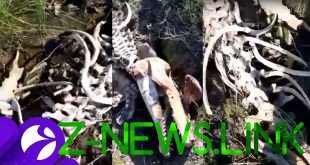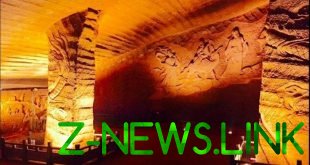

The American research apparatus of the OSIRIS-REx reached the asteroid Bennu in early December, 2018 and reached its orbit on December 31. The main goal of the mission is selection and return a soil sample from the surface of the asteroid. The arrival of the capsule with the sample to Earth is expected in 2023.
Over the past from the beginning of the year months of the OSIRIS-REx completely filmed surface of Bennu to select a place for landing spacecraft. Scientists chose four promising area. By December of them will leave only two sites – main and a spare.
According to the original plan it was assumed that in the summer of 2019 will be selected two landing area. A preliminary analysis of asteroid Bennu, done on the Ground by the radar survey showed that on its surface should be relatively flat ground, suitable for planting. However, after the rendezvous with Bennu, the spacecraft found that the entire surface of the asteroid are covered with large and small stones. Before the research team was tasked to find places where the size of stones not exceeding 2.5 cm in diameter – objects of this size can absorb suction head of the apparatus of OSIRIS-REx.
A delay of four months will not lead to failure of implementation of the program. In the schedule of the mission OSIRIS-REx on stage next to the asteroid Bennu was laid reserve of 300 days in case of unforeseen problems. The extra time will allow scientists to survey all four of the selected parcels in high resolution. According to the analysis of these images will be selected for the final landing place of the spacecraft.
In addition, the team had to reduce the requirements to the landing area. The baseline plan assumed that the radius of the flat area should be at least 25 m, but on the surface is just not so big surfaces without large stones, so as a result there were selected sites with a radius of 5 to 10 m. Also, professionals will have to adjust the planting program. The small size of the site increases the demands on the accuracy of navigation. Under the new plan, in the course of reduction the unit will be offline to be guided by images of the surface.
Perspective of the landing of the OSIRIS-REx was named after the birds that live in Egypt: “the Nightingale”, “the Kingfisher,” “the Sandpiper” and “Osprey”. They are located in different parts of the asteroid and differ in geological structure. The amount of material that can be selected on these sites, have not yet been evaluated. When choosing the specialists were guided only by the criteria of safe landing.
“The Nightingale” – the Northern station, located at 56 degrees North latitude. It highlights several promising areas for sampling. They are at the bottom of a small crater, which in turn, is the larger crater with a diameter of 140 m. the Site contains fine-grained material. From all four sites, here is the dark material and low surface temperature.
“Kingfisher” is located in a small crater with a diameter of 8 m near the equator Benn on 11 degrees North latitude. In the spectrum reflect the area allocated traces of hydrated minerals.
“Osprey” is also located in a small crater with a diameter of 20 m at 11 degrees North latitude. It contains rocks of different composition, in the spectrum of selected traces of carbon-rich minerals.
“Sandpiper” – a platform in the southern hemisphere Benn (47 degrees Yu. sh.). The site is located in a relatively flat area on the wall of a large crater with a diameter of 63 m. In the “Sandy” also contains hydrated minerals.
Detailed observations of the four sites will begin in the fall. In the first phase, OSIRIS-REx will perform a reconnaissance survey with the height of 1.29 km, to confirm that areas are safe for planting and contain a substance that can be collected. It will also identify the details of the relief, which can serve as reference points in the navigation system during landing. Based on these data, a list of perspective locations by December 2019 will be reduced to two.
In the beginning of 2020 OSIRIS-REx will perform a detailed survey of the remaining areas with lower height. Selection of rock specimen scheduled for the second half of 2020.
© 2019, paradox. All rights reserved.





